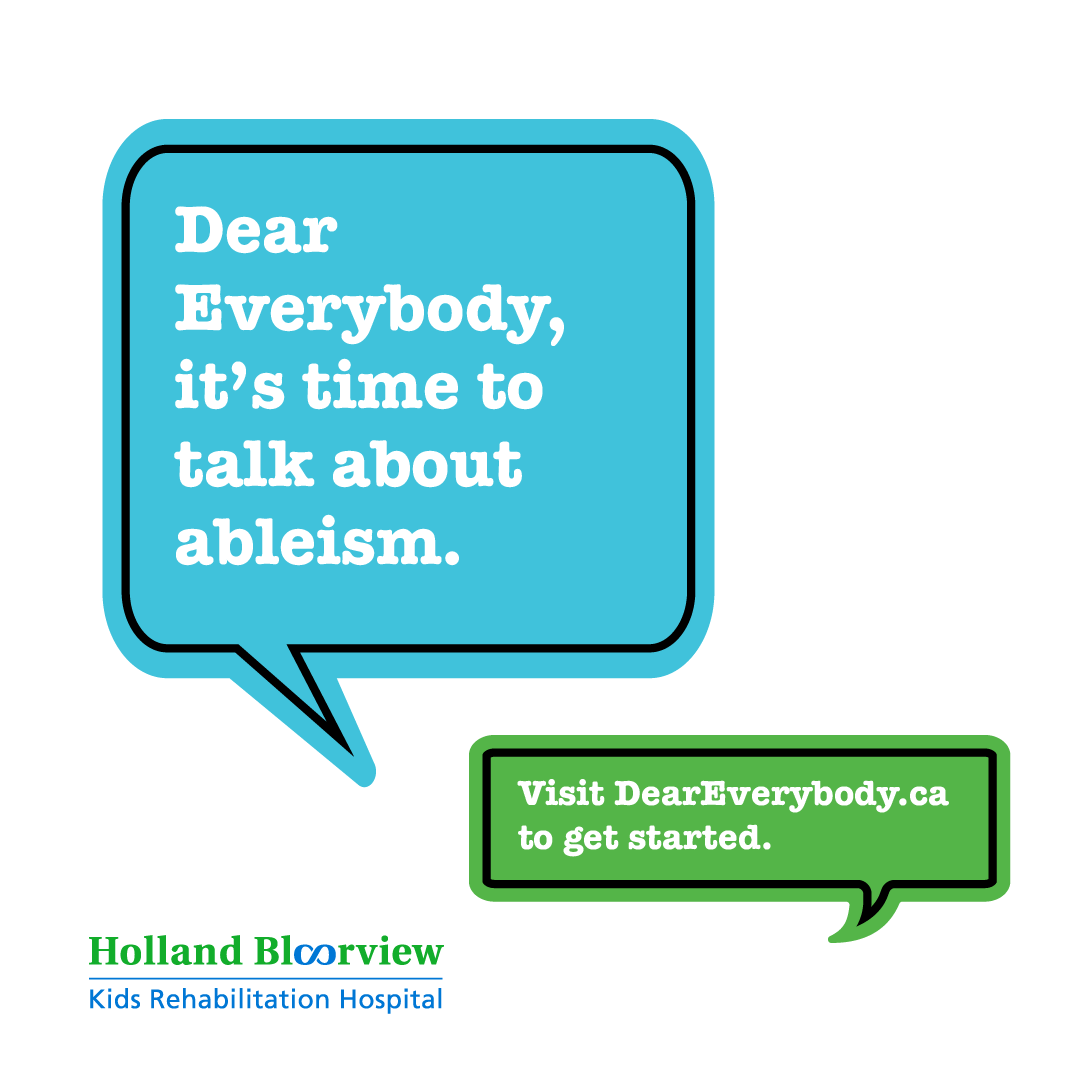For brands
Dear Brands,
Did you know 22% Canadians identify as having a disability? Sound like a small percentage? It’s not. That’s 6.2 million people. But we don’t see them —not how we should—and it’s time to fix that.
Dear Everybody is a national movement launched by Holland Bloorview Kids Rehabilitation Hospital in an effort to end stigma and eliminate bias towards disability.
One bias we’re trying to dissolve? The lack of representation – in advertising and in the media.
It’s no secret that people with disabilities are underrepresented or excluded, often included only as a token sympathy character or source of inspiration.
But that stops now—and it starts with you.
We want to build a more inclusive and realistic media landscape—one that includes people with disabilities, not because they’re inspiring but because that’s the make-up of our society.
So we’re asking for help. As an industry, it’s time to make our marketing more inclusive. As an industry we have to widen the context that people with disabilities are seen in. As an industry, it’s time to do better and be more inclusive within commercials, photos, recordings and text.
And you are a big part of that help. THANK YOU! By signing the Dear Everybody Agreement, you have already taken the first step to creating more representative advertising.
Our goal through this document is to provide you with all the tools, tips and contacts you need to make a significant difference through your advertising and media and how Holland Bloorview can help support and offer assistance as you make your adversting truly representative of all Canadians.
Looking to cast people with with disabilities in your next advertising campaign?
“You can’t be what you can’t see”. What could be more inspiring or stigma busting than showing your customers that being ‘different’ doesn’t need to make a person the centre of attention or the focal point. That they are just another person in the crowd; walking their dog; having dinner with friends and living their life, like everyone else.
You can find a full list of GTA based production resources that are committed to the Dear Everybody Agreement at deareverybody.ca or by contacting Holland Bloorview Foundation, who will be happy to supply the list.
Below are some of the top things to consider when casting a person with a disability.
When choosing casting and shooting locations, always consider the following:
- Are there steps/curbs that block a person with disabilities from entering a building?
- Is there an elevator? And will a mobility device fit inside the elevator?
- Is there an accessible bathroom?
- Are the hallways/doorways too narrow for a person using a wheelchair, electric scooter or walker, or wheelchair accessories like a communication device?
- Is there poor lighting for people with low vision?
- Are the parking spaces too narrow for a driver who uses a wheelchair?
- Is there a quiet space for someone who might have sensory issues?
- Is your location far? In a busy area? Is there no public transportation? Kids and youth with disabilities rely on accessible modes of transportation to and from locations. Consider this when arranging schedules, itineraries, and locations.
- Consider the local public transportation options. Is close to a bus stop or subway stop that is accessible? If not, have you budgeted to help provide accessible transportation if needed?
- The key is flexibility. Send scripts beforehand or plan for a little more time on set for photos or videos.
- Schedules of kids and youth with disabilities may not be conventional or consistent, as they’re often juggling school and appointments. So keep in mind, because of the demands, it may not be possible to plan a 12-hour day on set for shooting.
On top of physical and scheduling barriers, it’s also important to ensure your production team is understands attitudinal/social barriers, which are just as much of an obstacle. These can include:
- Avoiding someone with a disability out of worry that you may say something wrong
- Calling a person with a disability ‘courageous’ for pursuing a career
- Helping a person with a disability with a task, assuming they are incapable of accomplishing them on their own—we believe in always asking before going into action
- Using ableist language and words like lame, dumb, retarded, blind, deaf, idiot, imbecile, nuts, psycho, and spaz as insults
